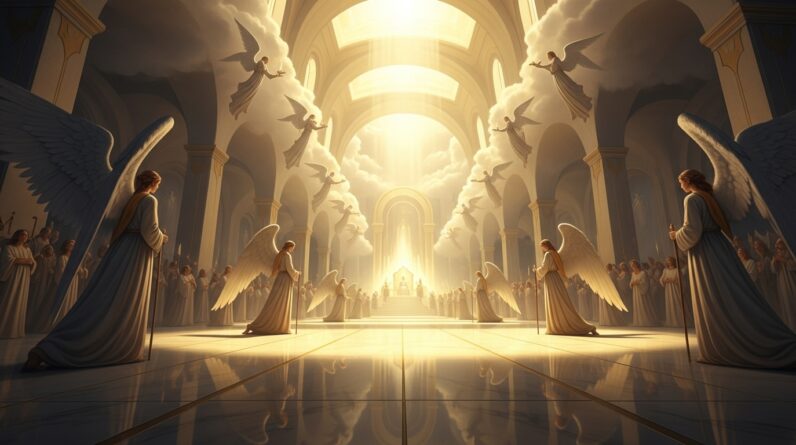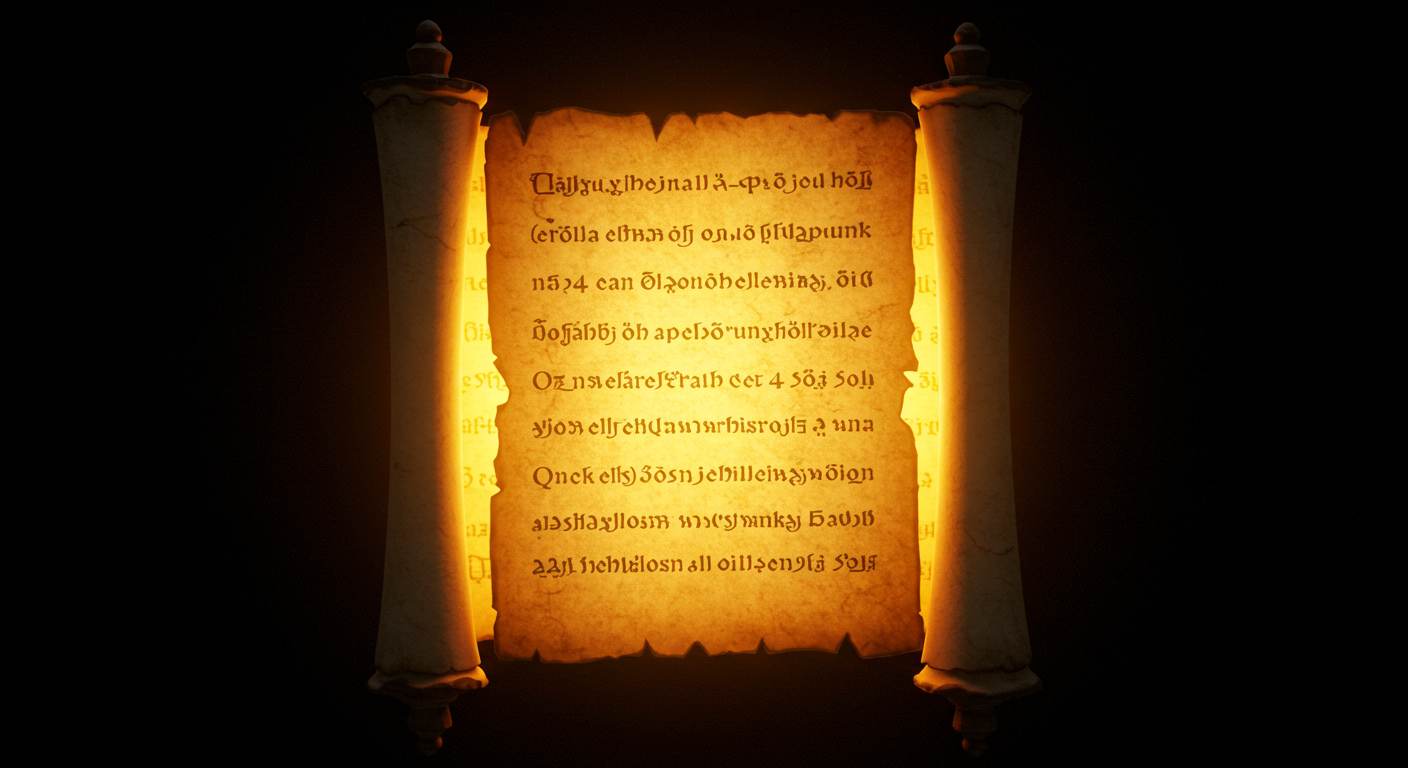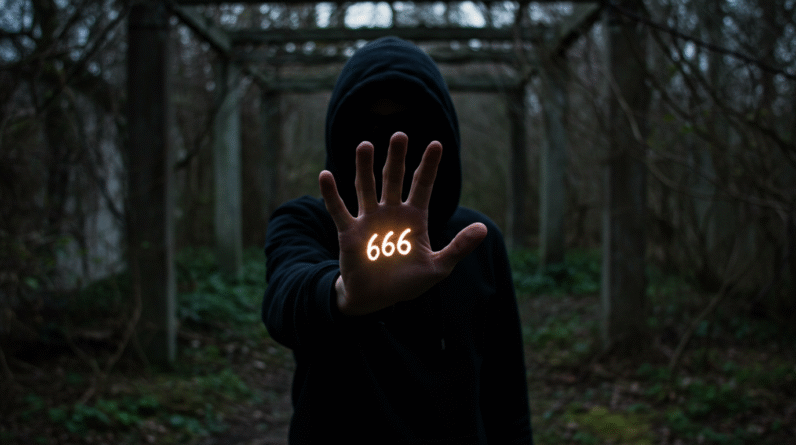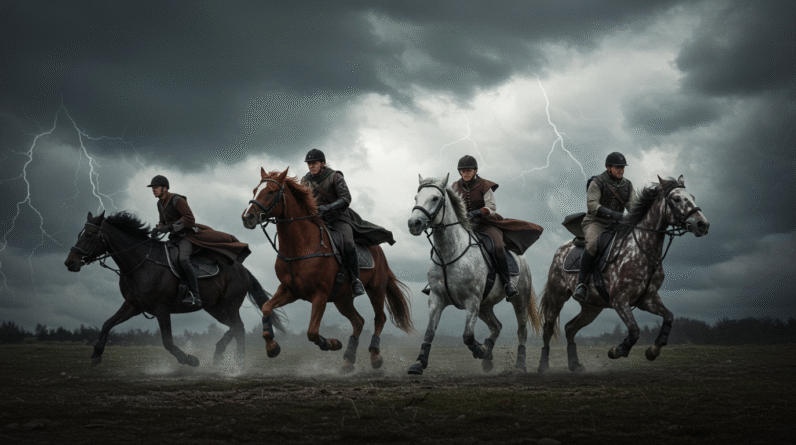Dive into the rich symbolism of The Woman and the Dragon in Revelation 12, exploring the woman, dragon, and child as timeless metaphors of hope, protection, and divine justice.
The Woman and the Dragon: Unveiling Symbolism in Revelation 12
Have you ever stumbled upon a passage in a book so packed with imagery that it practically begs you to reach for a highlighter? Revelation 12 in the Bible is one such passage where the stakes are high, the symbolism is thick, and the storytelling is epic. This chapter leaves you teetering on the edge of your seat, wondering what in the celestial realm is happening. Let’s peel back the layers of Revelation 12 and find out what these symbols are trying to tell us. You may find it’s not just about an ancient vision but a story that resonates deeply even today.
📖 Key Verse: Revelation 12:1-2
In Revelation 12, we find a scene that unfolds with mind-bending imagery. There’s a “great sign” appearing in heaven: a woman clothed with the sun, with the moon under her feet and a crown of twelve stars on her head. She’s pregnant and crying out in pain as she labors to give birth — a dramatic image that feels both distant and emotionally close.
Revelation 12:1-2 exhibits some of the most vivid symbolism you’ll encounter in biblical literature. But who is this woman, and why is she so important?
The Woman: An Enigma Wrapped in Majesty
The woman in Revelation 12 has sparked intense debate and curiosity among scholars, theologians, and curious readers alike. Some say she’s a symbol of Israel, others claim she represents the Church, and some, the Virgin Mary. But what if she’s a bit of all three?
This woman might symbolize Israel with her crown of twelve stars representing the twelve tribes. However, she also bears the hallmarks of the Church—suffering but destined for glory. Consider, too, how Mary fits snugly into this imagery: as the mother of Jesus, delivering the Messiah prophesied to overcome the world. Here we see layered symbolism, a vivid representation of the people who’ve suffered, endured, and awaited salvation.
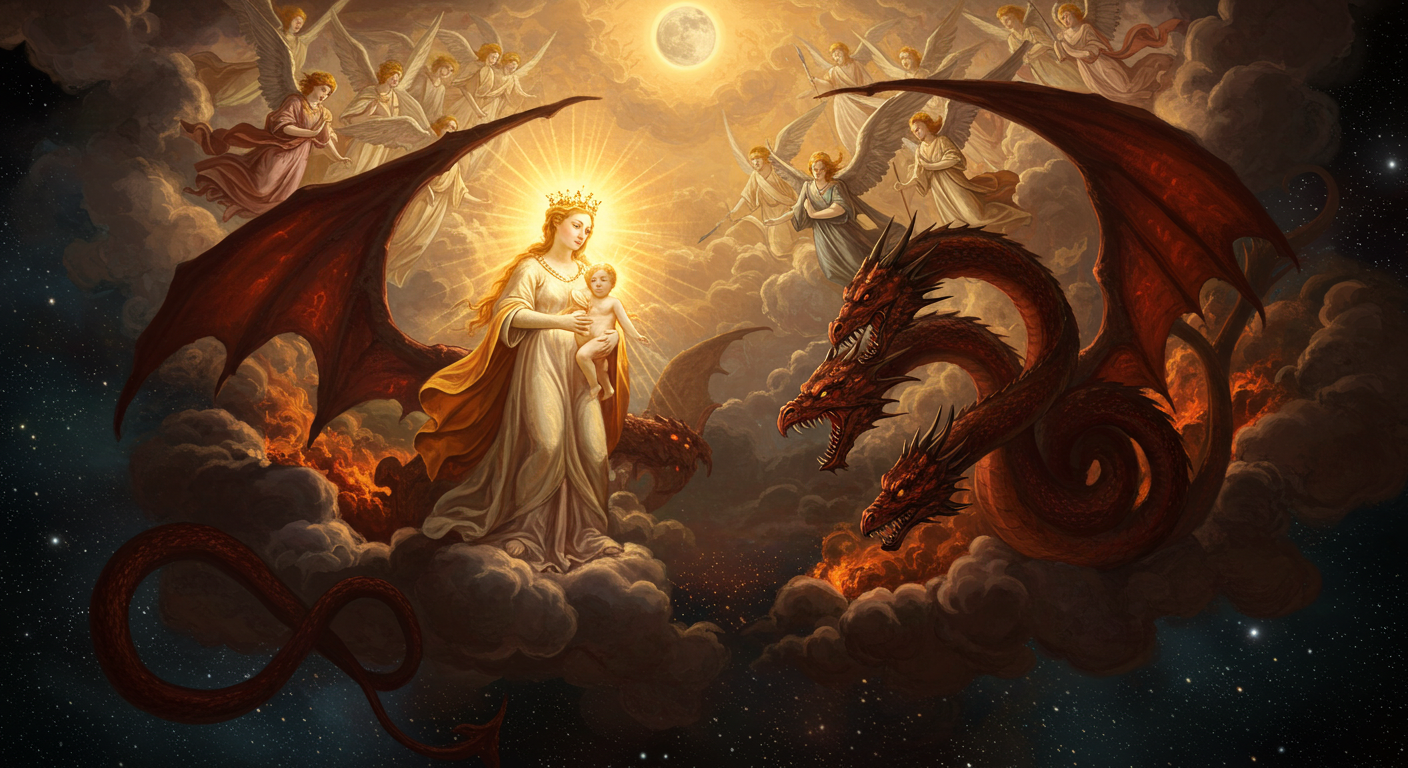
The Dragon: The Age-Old Adversary
Enter stage right, the dragon — a bold, intimidating creature with seven heads, ten horns, and a crown on each head. Talk about a dramatic entrance! This dragon, however, isn’t new on the block. He’s an embodiment of Satan, the classic biblical adversary, sequined with worldly power and malevolence.
Revelation 12:3 talks about this dragon, poised to devour the woman’s child the moment he’s born. A terrifying scene, isn’t it? This moment symbolizes the persistent threat to goodness — the ongoing battle between light and darkness, a battle that finds relevance in centuries past and present.
The Child: Hope Born Amidst Chaos
The child that the woman bears is described as a ruler destined to shepherd all nations “with an iron scepter,” meaning as dense as they come. This directly points to Christ, the awaited messianic figure, representative of hope, salvation, and divine authority.
In Revelation 12:5, we’re shown this child being snatched away from danger, taken to God’s throne. This act of divine intervention signifies that, despite adversity and opposition, hope and salvation are assured.
The Cosmic Battle: A Clash Beyond Imagination
Following the birth of the child, the narrative catapults us into a cosmic showdown. Michael and his angels wage war against the dragon, who retaliates with his army. Revelation 12:7-9 describes this celestial confrontation, culminating in the dragon’s defeat — a defeat symbolizing the perennial triumph of good over evil.
The scene reads like something straight out of a movie, doesn’t it? But unlike fictional escapades, this battle symbolizes divine justice as a reality, where evil is not only challenged but ultimately overthrown.
The Wilderness: A Symbol of Protection and Transformation
The narrative unfolds further, detailing how the woman escapes to the wilderness for safety. In biblical terms, the wilderness often symbolizes a place of refuge, transformation, and divine provision.
The protection offered in the wilderness signifies God’s provision and care, even when surrounded by adversity. This becomes a metaphor for life’s challenges — moments when we find ourselves ‘in the wilderness,’ yet simultaneously sheltered under a greater power.
Conclusion: A Timeless Story of Hope
Revelation 12, with its stunning symbols and riveting narrative, offers us more than just an ancient vision. It’s a story richly woven for reflection, sparking a call to see beyond the tangible world into cosmic battles of good and evil, hope, and redemption. It encourages you to explore how these symbols resonate personally — how they mirror struggles and victories within your own life.
If there’s one takeaway from this swirl of imagery, it’s this: even amidst chaos, hope withstands. It’s a narrative, ancient yet enduring, reminding us that, ultimately, light triumphs.
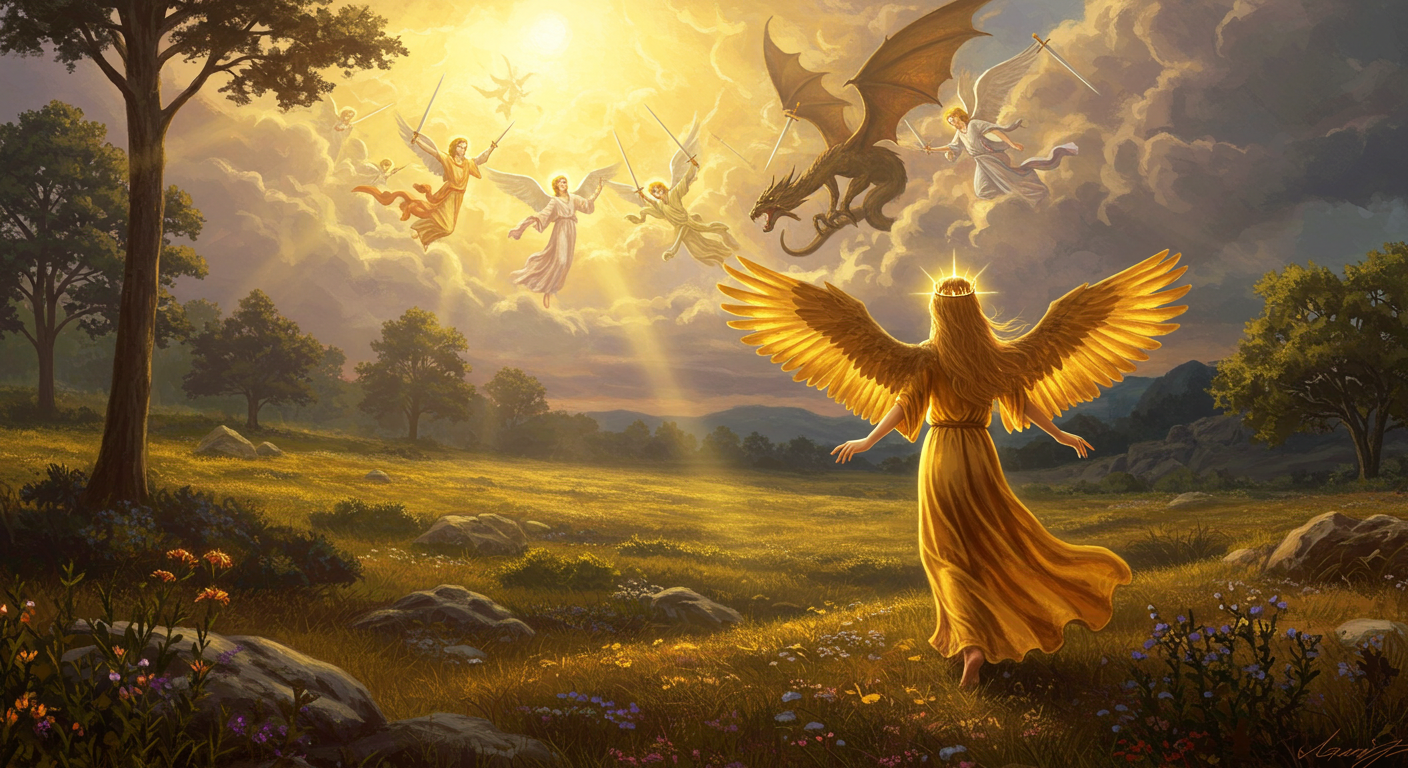
🔍 Explore More Bible Insights:
✅ 1. The Role of Eliab – David’s Brother in His Journey to Facing Goliath
Tone: Relational, reflective, character-focused
🔹 “Family Tensions and God’s Purpose – Discover the Connection”
Read it here.»
✅ 2. What Jeremiah 29:11 Means for Us Today
Tone: Hopeful, encouraging, life application
🔹 “God’s Plans Still Stand – Find Your Hope Here”
Read it here.»
✅ 3. The Wise and Foolish Builders – A Strong Foundation in Faith (Matthew 7:24-27)
Tone: Foundational, practical, discipleship
🔹 “Build Your Life on the Rock – Keep Learning”
Read it here.»
✅ 4. The Roman Centurion at the Cross – A Moment of Revelation
Tone: Awe-inspiring, redemptive, gospel-centered
🔹 “From Witness to Believer – Read His Revelation”
Read it here.»
As a ClickBank Affiliate, I earn from qualifying purchases.
Acknowledgment: All Bible verses referenced in this article were accessed via Bible Gateway (or Bible Hub).
“Want to explore more? Check out our latest post on Why Jesus? and discover the life-changing truth of the Gospel!”



